- Call us: 01444 237070
- Contact Us
- Stores
- Sign In / Register
-
- Back
- Used Cameras
- Used Accessories
- Used Lenses
- Used Video
- Used Film Equipment
- Used Stock Alert
- Used Blank Test
- Sell or Part Exchange
- Used Clearance
- Recently Added Used Equipment
- Park Picks
- All Used Black Friday Deals
- Faulty
- Trade-In
- Blog
- New in
- Call us
- Contact us
- Stores
- Sign in
- Categories
- Tips & Inspiration
- Reviews
- News
- Events
- Features
- Buying Guides
- Competitions
OM System OM-1 in Amsterdam Hands-On Review
Micro Four Thirds is a format that has seen a lot of fluctuations. Unlike more commonly used sensor sizes, it’s niche, idiosyncratic and often misunderstood by the full-frame faithful. However, there always seems to be a new release that keeps the format prominent. The more you delve into its offerings, the more quirks and benefits seem to spring up as if from nowhere, with the cooperation of Olympus and Panasonic bringing exciting computational and mechanical innovations to the table.
On release in 2022, the OM System OM-1 was a modern, mirrorless reinvention of the classic Olympus icon. It diverges from the form of its boxy ancestor and, whilst keeping robust, is a sleek powerhouse. As a symbol of its heritage, it retains the Olympus word-mark; yet it brings a series of revolutions that usher in the reign of OM System and keep the heart of Micro Four Thirds beating.
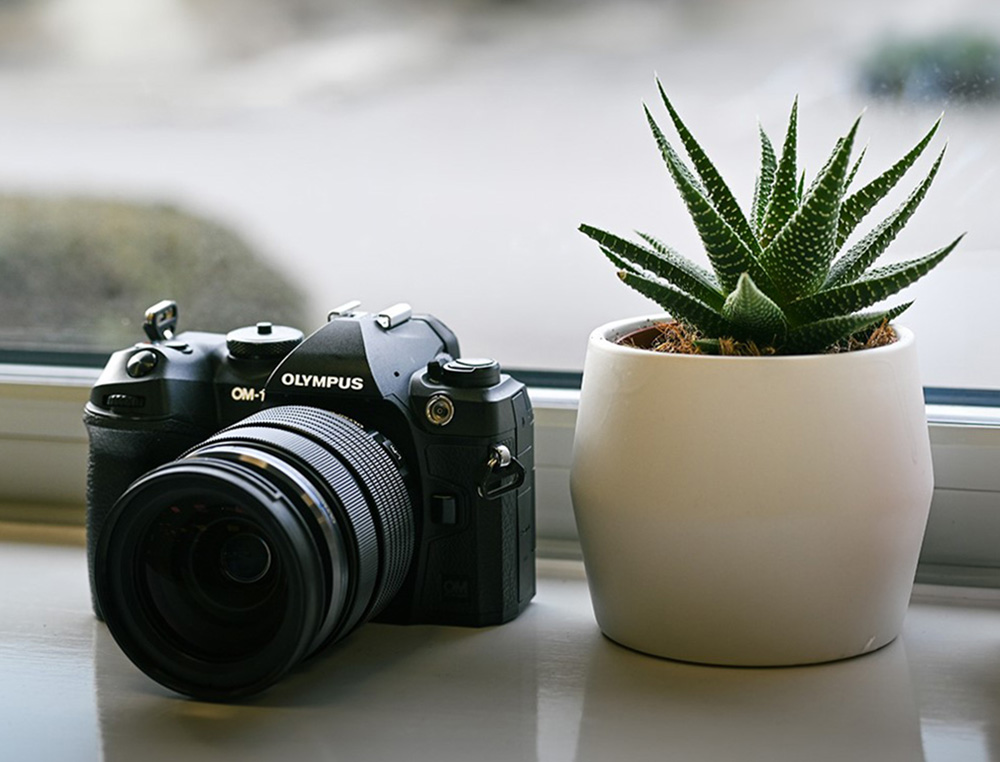
It crams a 20MP stacked sensor, up to 8 stops of image stabilisation and world-first IP53 weather sealing into a light, small package. It carries all the benefits that you’d expect from this nifty format while pulling no punches against today’s full-frame overlords. With the release of its second generation (the OM System OM-1 II) being a big subject of discussion, it’s arguably a better time than ever to check out the original and get a taste for the buzz.
I was lucky enough to get my hands on this outstanding camera and fly with it to Amsterdam, one of the most vibrant and eye-catching cities in Europe. With me, I took a used Olympus M.Zuiko 12-40mm f/2.8 PRO lens, a classic standard zoom that still has its place on the front of a camera almost ten years younger. Keep reading as I share how I got on with this enticing combo, in a city with no shortage of colour!
Introduction
After having taken a deep dive into the benefits of shooting Micro Four Thirds on the blog, I figured I’d be a bit of an unreliable narrator had I not got some tangible experience in the bank. I decided that to truly feel the benefits of the format, I’d need to shoot something that would revel in its portability, ergonomics and user experience.
With a flight booked to Amsterdam Schiphol two weeks away, the obvious option was travel photography. Micro Four Thirds is almost perfectly tailored for outdoor photography – as a compromise between full-frame performance and versatility and a compact system, it ticks both boxes for travel. While Panasonic Lumix did have a professional allure, an OM System camera with a timeless Olympus lens seemed perfect for travelling with, with its cutting-edge design and trendy finishes. Still, the question remained – which one was I going to go with?

For a while, I toyed with the idea of the OM System OM-5, a camera that is the essence of portability. However, I knew deep down that the specs of the OM-1 demonstrate the best of everything that Micro Four Thirds has to offer. With ISO performance that would allow me to make the most of both day and night, a high-performance sensor and all the bells and whistles expected from a flagship, it just offered too much to turn down.
From that moment on my mind was set, and I picked up both the camera and a tidy standard zoom from our used department the day before departure.
Olympus M.Zuiko 12-40mm f2.8 PRO – a great camera’s sidekick
Before considering the camera itself, it’s worth taking a quick look at the lens with which I tested it - the Olympus M.Zuiko 12-40mm f/2.8 PRO. Hardly the most recent lens, it predates the OM System OM-1 by some nine years, releasing in 2013 alongside the OM-D E-M1; by no means a modern camera today.
Despite its retro, metallic design, this lens however felt and performed as if it had come from the mirrorless takeover of the late 2010s, and I truly believe it’s a hidden gem for any MFT photographer needing an inexpensive, punchy standard zoom lens.
Sadly, I didn’t get to employ the modern iteration of this lens, the OM System 12-40mm f/2.8 PRO II, but in all honesty I’m not sure I would have needed to. I struggled to attribute any image quality problems to the lens – I wasn’t hindered at all by its performance; it cooperated brilliantly with the OM-1’s modern autofocus and gave me the perfect amount of detail to freely edit my photos.
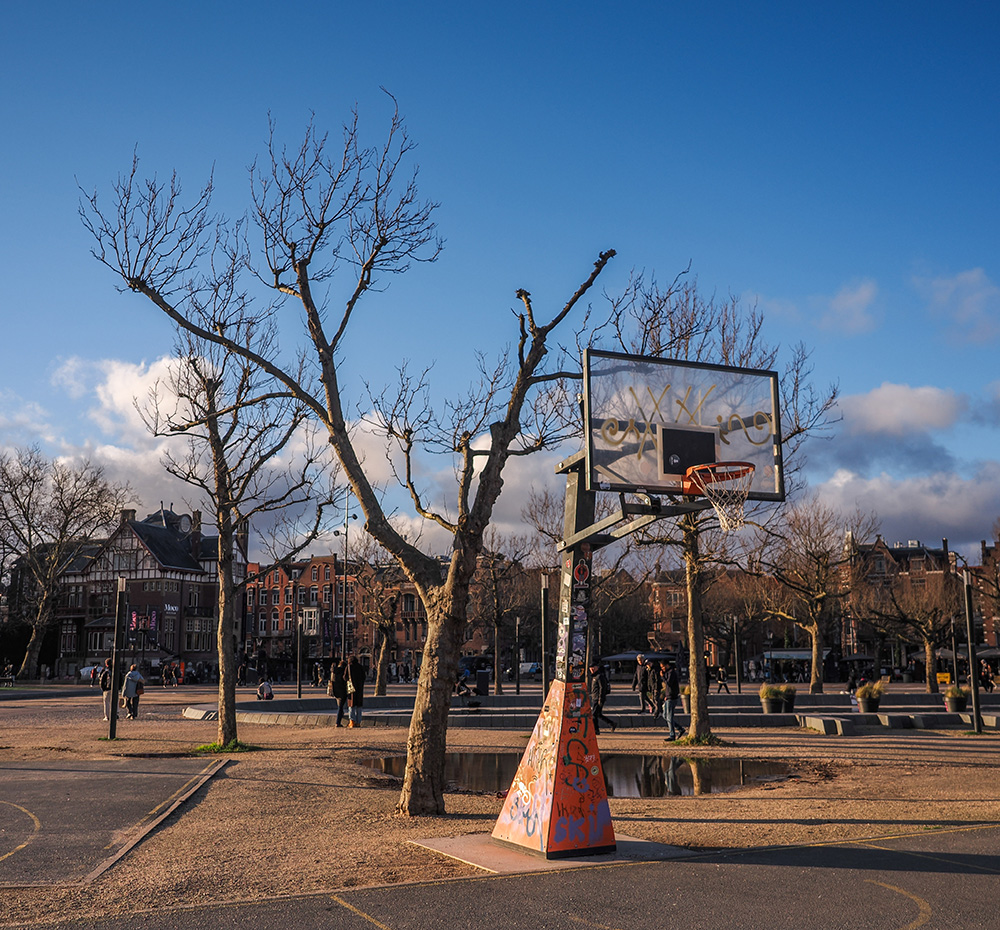
1/1600 sec – f/2.8 – ISO 100
The wide maximum aperture was especially helpful as it gave me a lot of control over exposure. The Micro Four Thirds sensor results in greater depth of field for any given aperture – while not the best if you want to annihilate the background and pick up some nice bokeh, not having to sacrifice depth of field when working in low light was a blessing. Having plenty of detail whilst letting lots of light flood in through the lens helped me to produce some crystal-clear low-light shots and not have to limit myself to smaller subjects.
The equivalent focal length of 24-80mm was perfect for 99% of my street shots. The wide angle allowed me to capture the ever-present height of the city while being able to zoom in 10mm beyond a full-frame standard zoom helped me pick out subjects with precision. The added lens compression allowed me to even try my hand at a couple of quick portraits, with the help of a wide aperture, confidence and some improvised Dutch. As far as travel lenses go, this one is very difficult to beat!

1/2000 sec – f/2.8 – ISO 100
Image quality
Discussing image quality is an interesting one for this camera because as hard as I try I can’t see very many flaws. The 20MP resolution provided, while not coming close to high-end full-frames, gets the job done – it isn’t difficult to take a professional photo on this camera as long as you’re technically correct. The detail in the photos this camera takes is stunning, and with such a good lens, I was treated to an abundance of sharp images.
While shooting the city on a megapixel monster like the 61MP Sony A7R V would have been a blast, the resolution of the photos that the OM-1 took were perfect for what I was looking to produce, and gave me a brilliant compact system as a trade-off. It prioritises reliability, comfort and experience over full-throttle specs that often make taking a great photo a little more demanding by sacrificing usability.
The colours my camera and lens produced were outstanding. Admittedly, I forgot to set my camera to RAW for the first half of my trip, but in all fairness, it hardly hurt my output. Not only this, but it gave me a chance to check out the OM-1’s colour processing. Olympus’s brilliant image processor made this much less of a blunder than it would have been, capturing all the vibrance of Amsterdam even in JPEGs, so I’ll have to thank their engineers for saving my skin.

1/160 sec – f/8.0 – ISO 80
Unfortunately, a few shots were lost to me poorly exposing with the mindset that I could pull data back in post; but for the majority of, I was thrilled with what OM System image processing has had to offer. Every photo was packed with as much colour as could be squeezed out of my shot, capturing a deeply authentic image of a lively Amsterdam that I’m very grateful for.
When I did right my wrongs and started shooting in RAW, I was impressed with the dynamic range that could be shown off with this camera. While achieving a good exposure straight out of the camera was made much easier, I was able to sort out some tricky lighting situations in post, drawing plenty of detail out of both the shadows in the foreground and the highlights in the sky. On a few photos, the latter was a real blessing - the skies I was confronted with were rather dull due to the inclement weather, and having that freedom to darken the highlights and give them more depth was much needed.
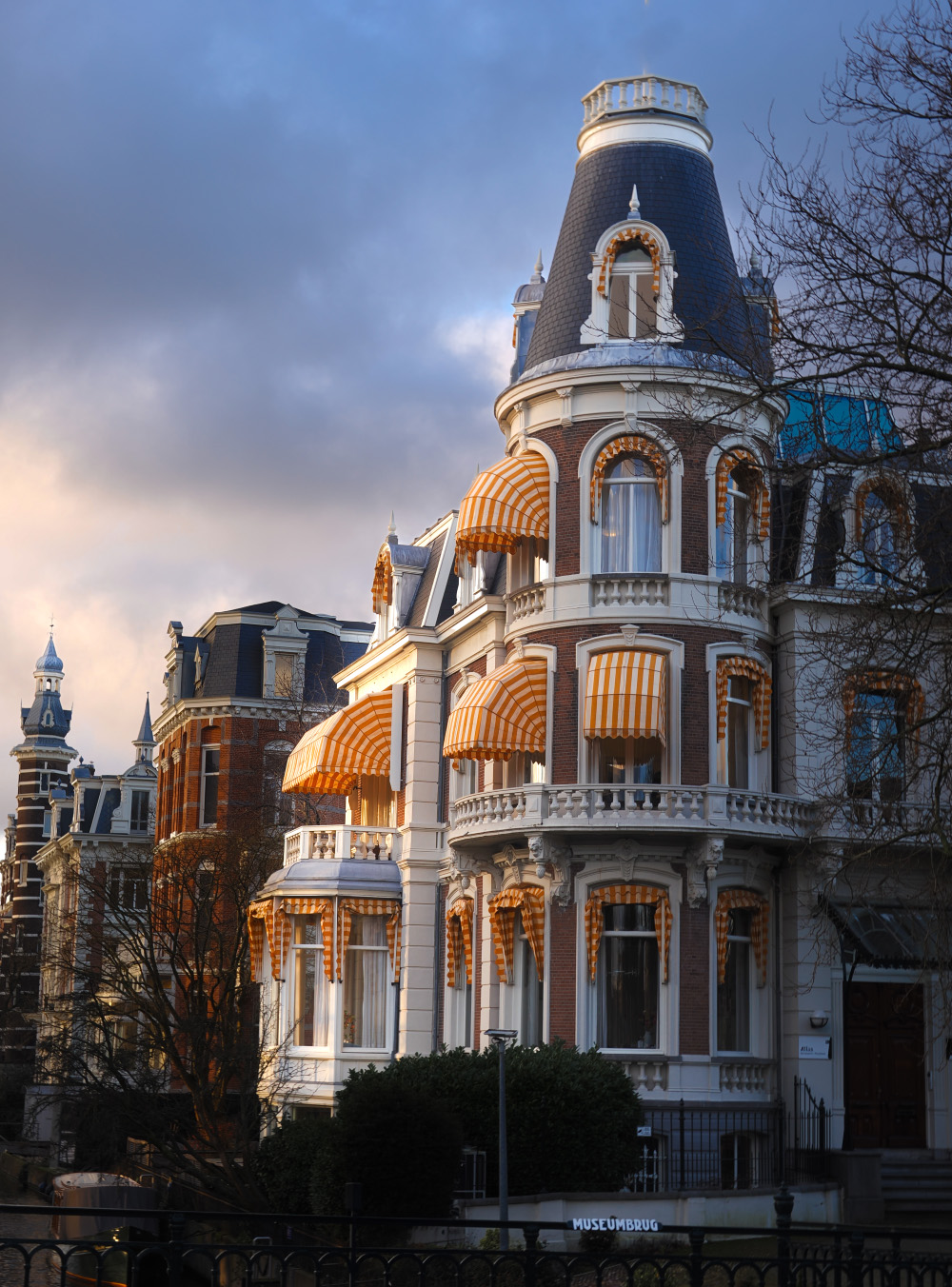
1/80 sec – f/5.6 – ISO 100
A creative feature of the OM-1 is the Handheld High Res Shot. This utilises pixel-shift shooting and combines photos to produce a single 50MP image – had I brought a tripod with me, I could have brought out the full capabilities of the High Res Shot technology and produced some huge 80MP images. This features on a lot of Micro Four Thirds cameras, a quirk that both Panasonic and Olympus have incorporated into their cameras, with the latter going beyond 100MP.
In all fairness, while I can see the use of this if you’re printing photos, or if you’ve just got a penchant for high resolutions; I believe the 20MP sensor will suffice for almost anything you want to shoot. Where the wait counts, snapping away with the standard mode will do just fine – this worked for me, as constantly moving from A to B meant I hardly had the time to stand around and wait for the sensor to do its thing.
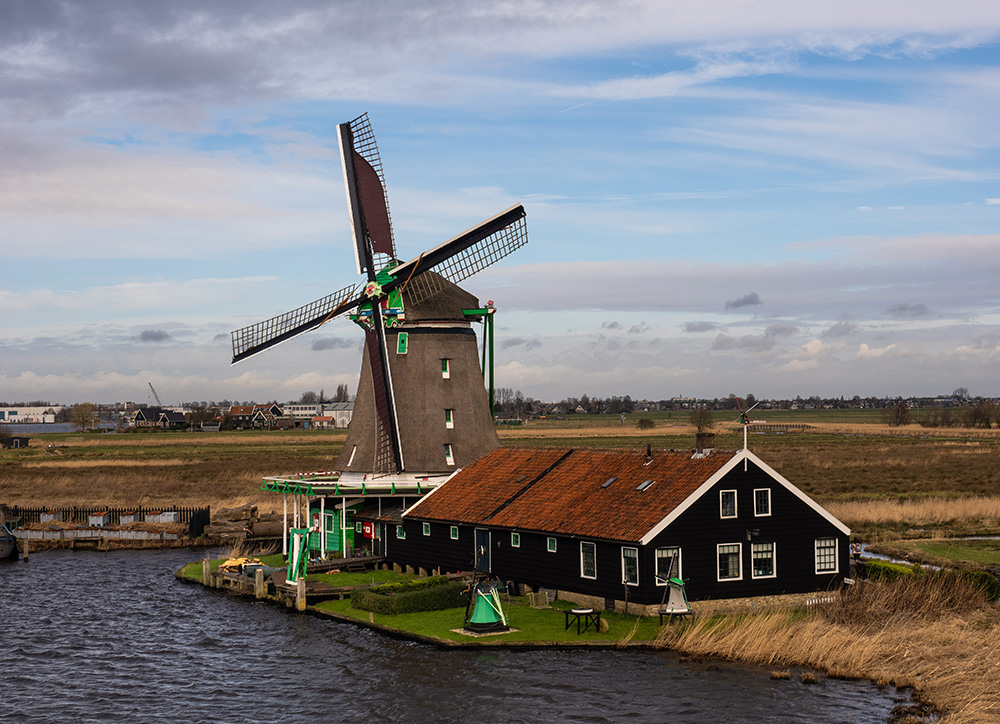
1/320 sec – f/8.0 – ISO 80
Another big benefit of the Micro Four Thirds sensor in the OM-1 is the first-class image stabilisation. With such a small imaging sensor, the IBIS system is free to work its magic and has lots of room to shift it around, providing a huge seven stops of stabilisation to a shaky-handed photographer like myself! This gave me so much freedom when exposing, as being able to shoot sharp photos handheld above 1/50 sec allowed me to let lots of light in through the lens without sacrificing a clean shot.
To truly indulge in the stabilisation power the OM-1 gives you, you should choose one of many MFT lenses with optical image stabilisation for an extra stop. The all-in-one Olympus M.Zuiko 12-100 f/4 IS PRO will work wonders in your system.
Design
One of the biggest appeals of the Micro Four Thirds format is the design freedom that it provides. The OM-1 is no exception. Not only is it relatively much smaller for a flagship mirrorless camera, but the lenses available are so much lighter and just as precise.
Holding this camera for the first time in our showroom, I could immediately feel the thought that had been put into the ergonomics. The OM-1 has a comfortable, pronounced grip for your shutter hand. When your thumb isn’t hovering over the AF-ON button, there’s a nice little rest on the top of the camera.
The camera may look a little boxy at first glance, but I found it almost felt moulded to my hands, and I hardly had to think about all the buttons and dials which are perfectly positioned for quick control on the go. The buttons, switches and dials all feel nicely rugged and the build quality is outstanding.
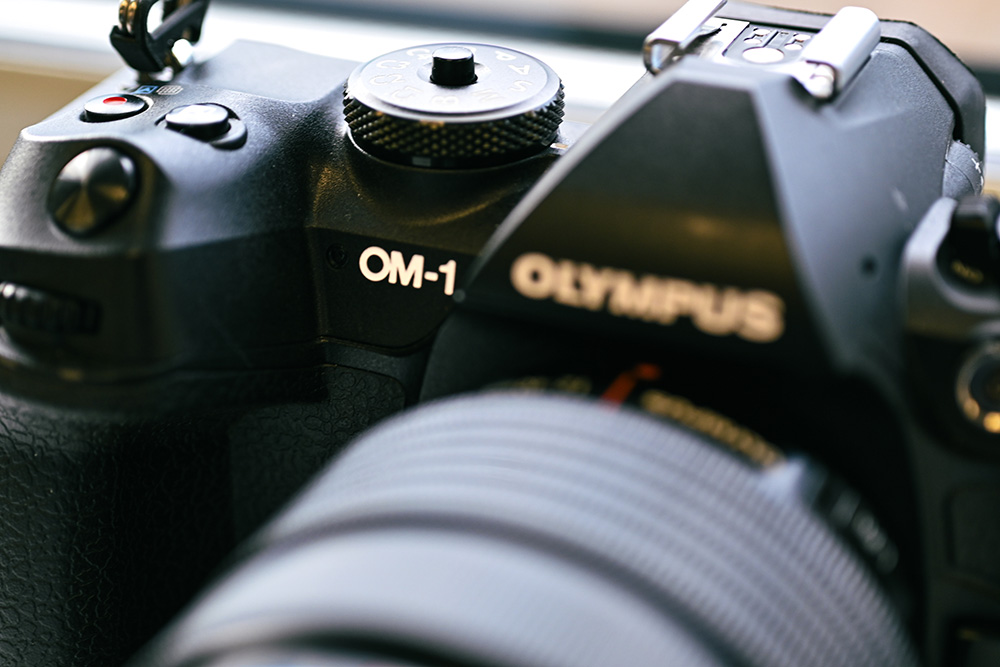
The camera features a joystick (a feature that I struggle to live without) and perfectly placed command dials that make sure it doesn’t take long for your manual adjustments to become a reflex. As I found myself shooting single AF most of the time, adjusting the focus point was fast and natural Switching to a new system can often be frustrating; however, the gap between exclusively shooting Nikon to a smaller, different design was hardly a large one for me. Judging from more experienced users, feel and ease of use are two of the main factors that keep OM-1 users invested.
The size was possibly the biggest draw to the Micro Four Thirds format for me, and this proved to be one of the things I enjoyed the most about using the OM-1. Framing a shot on a busy pathway is no mean feat, and it just means so much in a crowded place to have a high-end camera and lens that aren’t intimidatingly large and can be raised without intruding on anyone’s personal space.
Furthermore, it just adds more peace of mind to street photography – sure, I’d love the power of a big full-frame on a grassy landscape shoot where I’m more likely to see a cow than another person, but on busy streets where hordes of people are coming at you, size and comfort is of the essence. You don’t want to be too preoccupied with spatial awareness; all you want to be focusing on is nailing your shot. The OM-1 got me pretty close to that mindset.

Autofocus
As I was looking mainly to shoot the architecture of the city, using single autofocus got the job done most of the time. There was hardly any time between setting my area, pressing down and the shot being in perfect focus.
There’s an abundance of continuous autofocus modes on the OM-1. Aside from standard subject detection, wildlife lovers will appreciate separate modes for both birds and other animals. Additionally, there are settings for cars, motorcycles, planes, helicopters and locomotives. It was the latter that I got the most usage out of – at the times when I had to wait for the train a little longer than normal, I gave it a test drive and it was blisteringly quick.
Although I would have liked to have nailed my compositions better, it was great to freeze the motion of trains and not have to think about my focus, which is the hallmark of a good autofocus system. I got to work with all the necessary sharpness to bring out the vibrant liveries of the Sprinter and Intercity trains (and occasionally, some graffiti too).
I even tried out the outrageous 120fps blackout-free shooting mode on one train – massively overkill, but it just had to be done. I wouldn’t have felt complete otherwise. With trams showing up on the streets almost every minute too, it took no time to find a guinea pig for OM System’s snappy autofocus.

1/1000 sec – f/4.0 – ISO 1000
Low Light Performance
In the early days, Micro Four Thirds had a reputation for performing poorly in low light. The OM-1 lays waste to these claims. When it was released, it claimed to have the best ISO performance on any Micro Four Thirds camera, and using this camera I felt the liberty this brings, being able to go up to ISO values in the thousands without worrying too much.
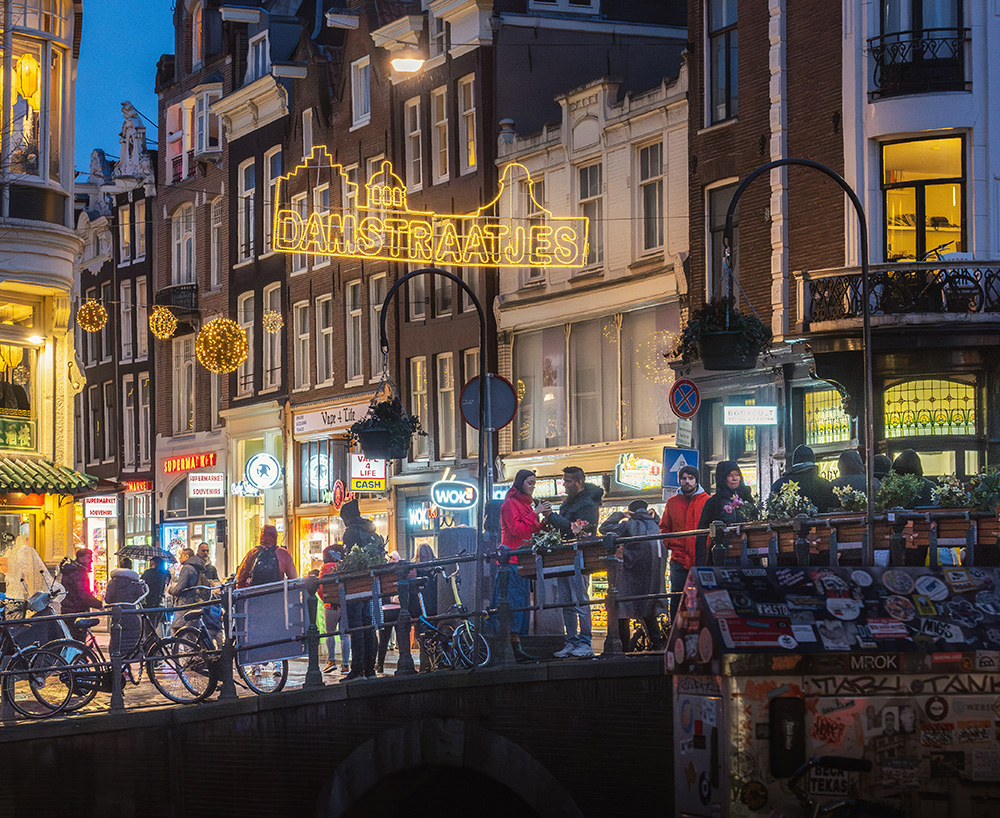
1/60 sec – f/5.0 – ISO 2500
The weather was mostly cloudy in Amsterdam during the daytime, meaning often I couldn’t keep my ISO sat at a healthy 100, or use the full ISO range of the OM-1 by going down to 80. Unless I was shooting on values upwards of 2000 I didn’t notice any problems and didn’t find myself reaching for that AI denoise tool, except on a few photos taken long after dusk.
When I wanted to put the performance through its paces, I cranked it up to an eye-watering ISO 4000, where there was inevitably some noticeable grain. However, it had the same impact on image quality as the low light shots on some older full-frame cameras I’ve used in the past, if not less, so I’m genuinely impressed by the performance that OM System provides in such a little sensor.
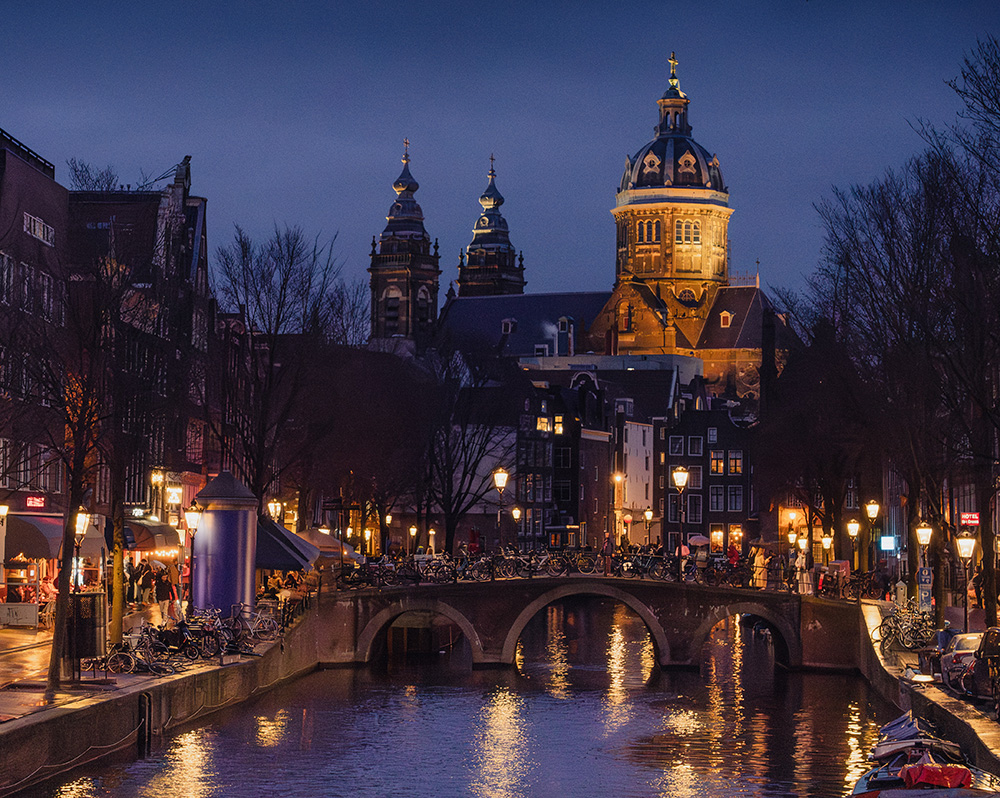
1/60 sec – f/5.0 – ISO 4000
Robustness + Weather Sealing
Before taking off, the weather forecast for Amsterdam looked dire. I wasn’t eager to spend four days shooting grey skies and flatly-lit streets – however, to my elation; it seemed to blow over as soon as I landed.
However, on the last night I spent in the city, the rain was non-stop. Not only are these not the best conditions to be caught in from a travel perspective, but keeping camera gear dry in these situations is a principal concern. I’m happy to report that using the OM-1 in wet conditions was fantastic, and it hardly took up space in my mind.
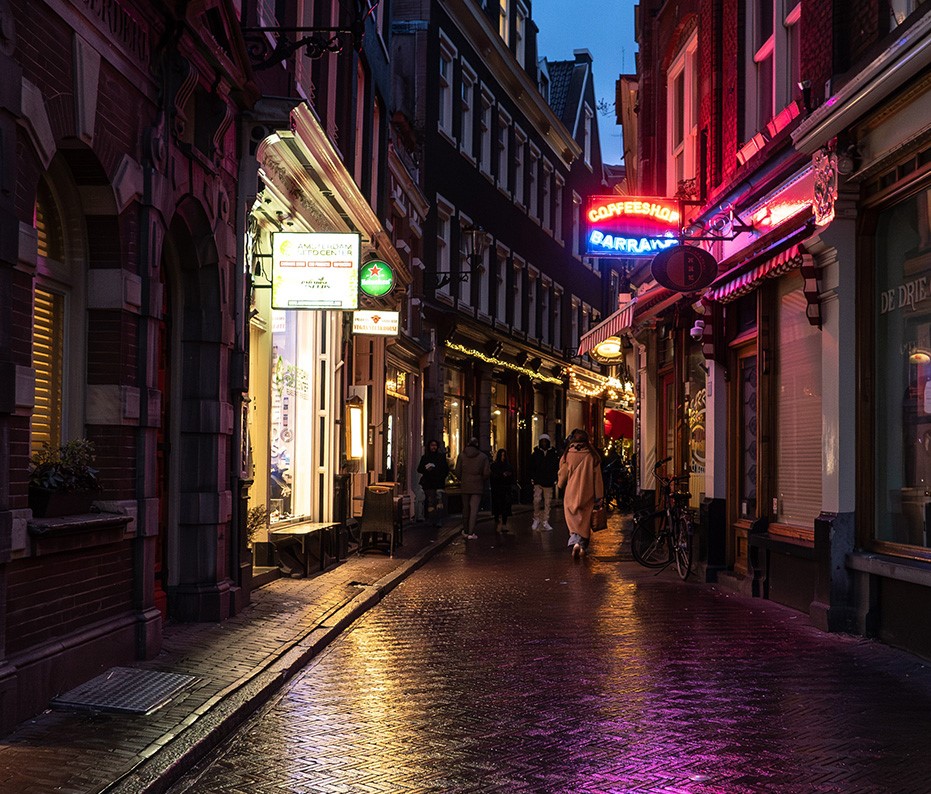
1/100 sec – f/2.8 – ISO 1600
The OM-1 is entirely dustproof and splashproof, and every Olympus M.Zuiko Pro lens is built with durability and protection in mind. Beyond the IP53 rating – the first camera to receive this – the gear just feels robust. I was comforted by the sight of raindrops beading up and rolling off the body and lens as I walked through what was quite a dreary scene, eventually taking refuge in the Rijksmuseum. Having a flip-out LCD screen that was simple to stow away was also reassuring.
Peace of mind is not something you often have when carrying a flagship mirrorless through a foreign country, so I applaud OM System’s efforts to achieve it. Although I didn’t mind the strap that came with the camera, I opted for my SmallRig shoulder strap for extra comfort and security.
Additional Notes
The battery life that the OM-1 provides is absurd. Despite taking upwards of 600 shots, the only times I had to do a full charge were when I took it out of the box, and when I packed it back up. As a nice little bit of versatility, the battery can charge inside the camera via USB-C, or externally via the OM-System charger kit. I found that just using the USB-C charger provided was the way to go, especially when space in your bag is of the essence – a likely scenario if Micro Four Thirds fits your needs as an on-the-go photographer.
The OM-1 also excels in computational photography, being full of different shooting modes that expand the boundaries of what’s possible on the camera. Live Composite Mode has been around for a while and enables long-exposure shots without blowing out highlights. We’ve already had a look at the High-Resolution Mode, which is helpful in situations where a larger image goes a long way.

1/100 sec – f/8.0 – ISO 800
Live ND Mode is an incredibly innovative tool – in any situation where you’d want to deploy a neutral density filter, the OM-1 can build the effect into the camera. This is hugely helpful for low-exposure shooting as, remarkably, it requires no extra gear. That’s not all – graduated ND filters are also available, allowing you to adjust light intensity across specific parts of your image. On the OM-1, the intensity of the ‘filters’ ranges from 1 stop to 6 stops of light reduction.
Lastly, focus stacking and bracketing are extremely helpful for those who want detail throughout their scene. By combining multiple shots at different focus points, the result is a photo that is in sharp focus all the way through. This is particularly helpful when you want to accentuate foreground details without sacrificing the clarity of the whole image.
Final Verdict
My main takeaway from my time with the OM-1 was how deeply enjoyable it was to use. I’ve been looking to bolster my travel photography credit for a long time, and this camera was just so inspiring to help me do so. Besides the brilliant ease of use, ergonomics and portability, bundled into this small package is a hard-hitting, one-size-fits-all professional camera that not only feels great but takes photos you can be proud of. As an enthusiast, this is priceless.
However, the OM-1 is no toy – both autofocus and image quality are head and shoulders above their respective competition, with upgrades in everything from the processor to the sensor. Pairing this with a surprisingly powerful lens, I was treated to the best of what Micro Four Thirds has to offer to professionals and enthusiasts alike.
Some of the photos I’ve taken on my trip are some of my favourites, not only because of the brilliant specs but because the thought OM System has put into the feel and performance of this camera inspired me to not waste a single shot when exploring Amsterdam. Call me pretentious, but I know I felt that way!
Could I have taken sharper photos on a larger sensor? Yes. Would I have wanted to, knowing what the OM-1 offers my photography beyond resolution? With that in question, I’m not so sure. Now that I’ve had the chance to see what I can do with a Micro Four Thirds camera, and appreciate all of the bells and whistles that the OM-1 provides, I’ll think twice before parading the superiority of full-frame.
Park Cameras is hugely passionate about the OM System OM-1 and all of the other exciting products that the brand has to offer. You can pick up a new OM-1 today, however with the release of the OM-1 II, finding this camera used is significantly cheaper and a great entry into the world of Micro Four Thirds, especially with all the brilliant new and used MFT lenses like the Olympus 12-40mm f2.8 Pro.
If you’re still searching for the tool that will take your photography to the next level, explore our range of digital cameras, lenses and more today – we’re sure you’ll find what’s best for you!
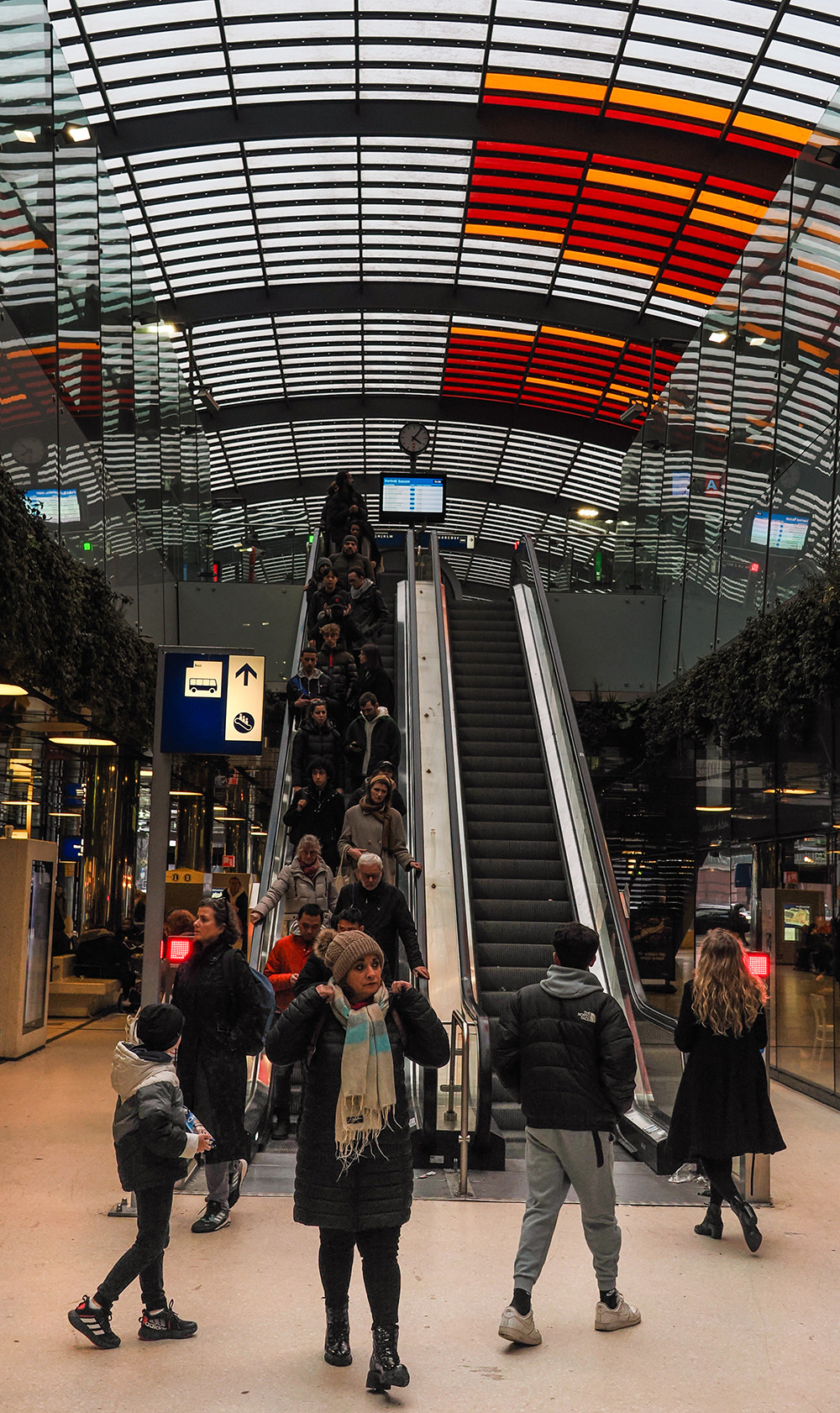
1/400 sec – f/4.0 – ISO 800
Share this post:
By Thom Pyle on 05/03/2024

Trade in your old equipment
Fast and easy trade in service ensures your old gear is collected efficiently and you are paid quickly! It's very simple to trade in your unwanted photography gear. Just head over to our dedicated Sell or Part Exchange page, fill out the details, and we'll get back to you with an offer for your old gear. Take the cash, or put it towards the cost of your new gear. It's up to you! Find out more
sign up to the newsletter
Keep up to date on the latest photography news, events and offers. Sign up now